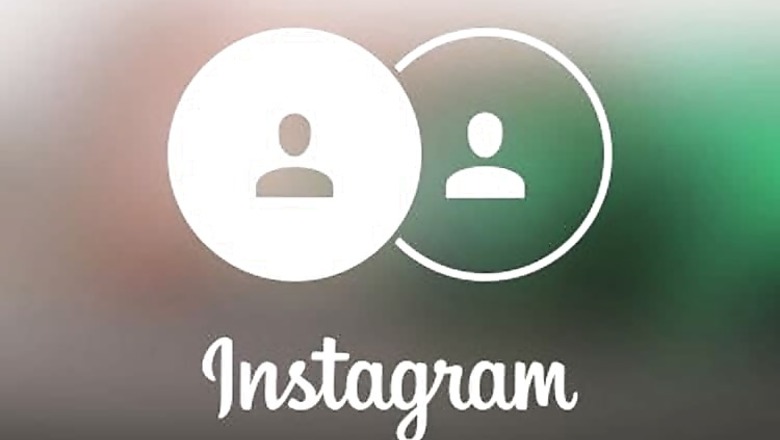
views
Human beings' fascination with photography shows no signs of ebbing in spite of moving images making inroads into the living rooms (television) and on digital and virtual world (YouTube). A proof to this effect is the birth and explosion of the photo and video sharing social media website Instagram. It is not only the millennial generation (Generation Y) sharing and viewing of photos on Instagram but also the digitally precocious and audience - and constituents - conscious politicians across the continents both directly elected and indirectly world leaders.
Only via app!
One cannot open an account on Instagram through a desktop, laptop or tablet computer but only with an internet-connected mobile phone. Only after that one can access one's account on another (traditional and old) platform. This ensures that the account holder's movements are also stored on Instagram (just in case), and possibly to monetise the data (mining) at a later stage for one or the other reason (if it sees exodus of subscribers).
Apps are a reality: they are creeping and penetrating into smartphones (and a phone has to be not just a mobile or cell phone but smart, and smarter, and smartest). Having a website is not enough for to be on the cybersphere but also an app and vice versa.
Instagram: a portmanteau word
Portmanteau is a travelling bag opening into two equal parts, or a suitcase. A portmanteau word is the one formed by blending of the sounds of two words; a morph formed out of two morphemes such as smog (smoke and fog), motel (motor and hotel), slithy (lithe and slim), gerrymander (Governor Gerry and salamander), Oxbridge (Universities of Oxford and Cambridge)… and Instagram (instant and telegram). The photos on Instagram can be uploaded instantly and the photos travel at the speed of a telegram (defunct in India) which was once one of the fastest mediums for transmission of a message like radio.
Digitally, an instant hit
Founded in 2010, Instagram has more than 300 million monthly active account holders capturing and sharing personal and professional moments. More than 60 million photos are shared on Instagram every day: one can spend one's lifetime seeing just those photographs especially if gentleman and ladies are still left with inheritances that won't dwindle.
Kevin Systrom and Mike Krieger founded Instagram in 2010. In six years, it has become popular, and caught the eye-balls of many in the public sphere. Once Kevin was part of Odeo the precursor to Twitter, and had a stint at Google working Gmail and Google Reader. Mike, from Sao Paulo, Brazil, worked at Meebo as a user experience designer. Instagram's design and user experience as of now almost unbeatable to share photos and shortest photos (under 10 seconds).
Sensing the potential of the mobile photo-sharing app, in 2012 Facebook bough Instagram for $1 billion in cash and stock but to be branded independently.
Endearments of Instagram:
The app is an easy-to-use visual communication; the user can upload a picture, and can apply a range of different filters; write an unlimited amount of text (unlike Twitter); the user can engage (interactive) like press the like button, or post a comment. Image tells the story: a picture is worth 1000 words!
Throwback Thursday (TBT), or throwbacks: Instagram popularised to celebrate Thursdays (some say Tuesday). TBT is a hashtag to bring into light those photos that would have been lying in the attics or in digital caves (floppy, or disused memory chip). Photos of yore and yonder such as the ones take on school trip, graduation day, birthday party, or a baby picture of oneself... which throws you back to those days to reflect, ruminate.
Political sphere on Instagram
Not only singers, actors, reality TV personalities, socialites (celebrities), people in glamour, showbiz, sports, and other related industry are on Instagram, but also the political leaders and heads of states. Actors have also become branding agents for brands, on Instagram too!
Modi: most popular in India
Prime Minister Narendra Modi is the third most popular politician on Instagram in the world after the US President Barack Obama and Russian Prime Minister Dmitry Medvedev (2 million).
Modi has 1.9 followers who had opened an account in 2014, and has 38 photos and has established 42,000 interactions per post according to Burson-Marsteller, a PR firm. Modi's political opponent and challenger Rahul Gandhi has debuted on Instagram with 77 posts, and 11.8K followers, and follows only 2 (Dr Ashok Tanwar and INC, India).
By a study conducted by Burson-Marsteller, out of 193 countries (member states) of the United Nations 136 have an account on Instagram. Its report concluded, "Instagram may not have the reach of its better-known social media rivals, but it has an ever-increasing following - something world leaders and their advisors have not been slow to recognise."
On Instagram, a politician or a socialite can show one's emotional side, and by sharing unusual and humane moments of life; one can restrain oneself from policy pronouncements, not maligning others with imagery, but one can promote oneself.
The staple stuff are images related to one's visits to foreign and religious places (secular, too), paying homages, congratulatory and condolence messages, beauty of the world one has discovered, presidential pardons, promoting one's hashtags, campaigning for a cause, and sharing grief and joy.
However, like some of us, world leaders turn 'cold' once the enthusiasm wears off (a real danger to the survival of any social media website.
Poke on pubic hair: why only woman, why not man?
Sticks and Stones is an online magazine that published a picture of two models showing not just their swimwear but pubic hair streaking of the lower garment. When it had come to the eyes of Instagram it banned the account citing its policy: "Don't share photos or videos that show nudity or mature content." This policy of Instagram drew derision from women's groups: why not men posting photos showing their 'moose knuckles' and hairs are not censored. In fact, many raunchy photos of celebrities to models cutting across genders make their way to Instagram as long as they fit to the 'heteronormative' category.
Social media is not a substitute for mainstream media: the latter knows the professional standards and what decency is, and what is not. But Instagram gives the users to test the borders and boundaries of what is nudity, what is maturity and could make news.
Instagram is around us for instant photography, to instantly share photos with a wide audience and a platform to say little (no restriction to say more) but to express something temporal to spiritual with a photo!
Kovuuri G Reddy is a media professional teaching and practicing journalism & media studies. He can be contacted at [email protected]

















Comments
0 comment